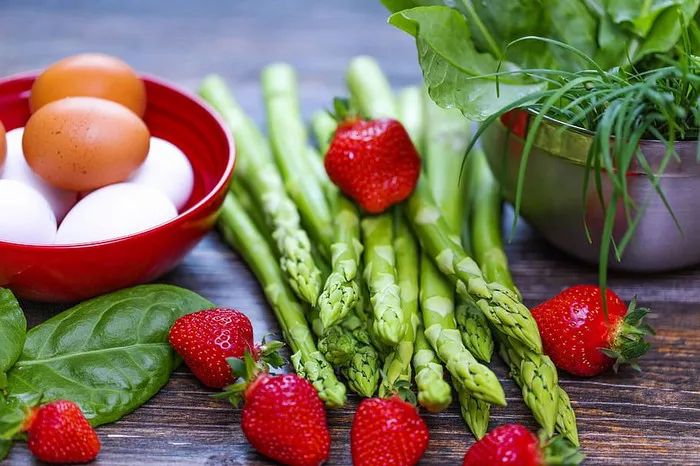Red glutinous rice wine, also known as “huangjiu” or “mijiu” in Chinese culture, is a traditional alcoholic beverage made from glutinous rice. This wine has a unique flavor profile that is sweet, rich, and slightly tangy. It is enjoyed as a drink or used in cooking for its deep, complex flavors. Making this wine at home is a rewarding process, and in this article, we will guide you through the steps involved in creating your own batch of red glutinous rice wine.
What You Need to Know Before Starting
Red glutinous rice wine is made using a fermentation process that converts the sugars in the rice into alcohol. The key ingredient in making this wine is red glutinous rice, which has a sticky and glutinous texture, making it ideal for fermentation. The process also involves a special fermentation starter called jiuqu, which contains wild yeast and mold that help with the fermentation.
To make this wine at home, you will need patience as the process takes several weeks. However, the effort is well worth it when you enjoy a glass of homemade red glutinous rice wine.
Ingredients
Red glutinous rice – This is the base of the wine, and it gives the wine its color and flavor. You can find red glutinous rice at most Asian grocery stores.
Jiuqu – This is the fermentation starter, which is made up of wild yeast and mold. It is available in many Asian grocery stores, or you can buy it online.
Water – Clean, filtered water is required for cooking the rice and to aid in the fermentation process.
Sugar – Sometimes sugar is added to sweeten the wine and promote fermentation. While traditional recipes may not require much sugar, adding a small amount can speed up fermentation.
Equipment You Will Need
Large pot or wok – To cook the rice.
Steamer or bamboo basket – For steaming the rice.
Fermentation vessel – A large glass jar or ceramic container is best for fermentation.
Cloth or lid – To cover the fermentation vessel during the process.
Fine mesh strainer – To separate the rice from the wine after fermentation.
Measuring cups and spoons – For accurate ingredient proportions.
Step-by-Step Guide to Making Red Glutinous Rice Wine
Step 1: Rinse the Rice
Start by rinsing the red glutinous rice thoroughly. This helps to remove any dust or impurities that may be on the rice. Place the rice in a large bowl, fill it with water, and gently wash the rice by swirling it around. Drain the water and repeat this process two or three times until the water is clear.
Step 2: Soak the Rice
Once the rice is clean, soak it in water for 8-12 hours. Soaking the rice softens it and allows the grains to absorb moisture, which is crucial for the fermentation process. If you’re in a rush, soaking the rice for at least 4 hours will work, but the longer you soak, the better the result.
Step 3: Steam the Rice
After the rice has soaked, it is time to steam it. Steaming is important because it preserves the structure of the rice, making it sticky and pliable, which is ideal for fermentation.
- Drain the soaked rice and transfer it to a steamer or bamboo basket.
- Steam the rice for about 30-40 minutes, or until it becomes tender but not mushy.
- Once the rice is cooked, remove it from the steamer and spread it out on a large plate or tray to cool to room temperature. This is essential because the fermentation starter (jiuqu) should be added to rice that is not too hot.
Step 4: Prepare the Jiuqu
While the rice is cooling, prepare the jiuqu starter. Jiuqu is a key ingredient that helps kickstart the fermentation process. You will need to crush the jiuqu into a fine powder to distribute it evenly throughout the rice. You can do this by placing the jiuqu in a small bowl and using a pestle or grinding it with your hands.
Step 5: Mix the Jiuqu with the Rice
Once the rice has cooled to room temperature, it’s time to add the jiuqu. Sprinkle the crushed jiuqu starter evenly over the rice. Use a wooden spoon or your hands to gently mix it in. Be careful not to crush the rice too much. You want the rice grains to remain intact but well coated with the jiuqu.
Step 6: Add Water and Sugar (Optional)
Next, add some water to the rice mixture. The amount of water you need depends on the consistency of the rice. Generally, you should add enough water to make the rice slightly wet but not swimming in liquid. The rice should still hold its shape but be moist enough to facilitate the fermentation process.
If you want to sweeten the wine, add a small amount of sugar at this stage. Typically, about 1-2 tablespoons of sugar will suffice for a sweeter flavor. However, if you prefer a more traditional taste, you can skip this step.
Step 7: Ferment the Rice
Transfer the mixture of rice, jiuqu, water, and sugar (if using) into a fermentation vessel. This vessel should be large enough to accommodate the rice and allow for the gases produced during fermentation to escape.
- Make sure the vessel is clean and dry before transferring the rice mixture. A glass jar, ceramic pot, or even a plastic container works well as a fermentation vessel.
- Once the rice is in the vessel, cover the opening with a clean cloth or a loose-fitting lid. This helps prevent dust or dirt from getting into the wine while allowing the gases from fermentation to escape.
- Place the fermentation vessel in a warm, dark place. A temperature between 25-30°C (77-86°F) is ideal for fermentation. Let the rice ferment for about 5-7 days.
During the fermentation process, the yeast and mold from the jiuqu will work on the rice, converting the sugars into alcohol. You should notice bubbles and a slight bubbling sound coming from the vessel, which indicates that fermentation is happening.
Step 8: Stir the Rice
After 3 days of fermentation, stir the rice gently to mix everything together. This will help ensure even fermentation. Be careful not to stir too vigorously, as this can damage the rice.
Cover the vessel again and continue to let it ferment for an additional 2-4 days.
Step 9: Strain and Bottle the Wine
Once the rice has fermented to your liking, it is time to separate the liquid from the rice. The wine should have a clear, amber color, with a slightly sweet and tangy taste.
- Use a fine mesh strainer or cheesecloth to separate the liquid from the rice. You can press the rice gently with a spoon to extract more liquid.
- Transfer the strained liquid into clean bottles or jars. Be sure to leave some space at the top of the bottle to allow for expansion.
- Seal the bottles tightly and refrigerate them. The wine will continue to mature in the bottle, and the flavor will deepen over time.
Step 10: Let It Age
After bottling, let the red glutinous rice wine age for at least 2-3 weeks before drinking. The flavor will continue to evolve, becoming smoother and more complex.
Tips for Making Red Glutinous Rice Wine
Control the Temperature: Keep the fermentation vessel in a warm, dark place. Too much heat or cold can disrupt the fermentation process.
Use Clean Equipment: Make sure all your equipment is sanitized properly to avoid contamination during fermentation.
Experiment with Sugar: Adjust the amount of sugar based on how sweet or dry you want the wine to be.
Fermentation Time: If you prefer a stronger flavor, you can allow the wine to ferment for longer, up to 10 days.
Conclusion
Making red glutinous rice wine at home can be a fun and rewarding project. While the process takes some time and patience, the end result is a delicious and authentic beverage that can be enjoyed on its own or used in cooking. By following these simple steps, you can create your own batch of homemade red glutinous rice wine that will impress your friends and family with its unique taste and richness.
Related topics:


























